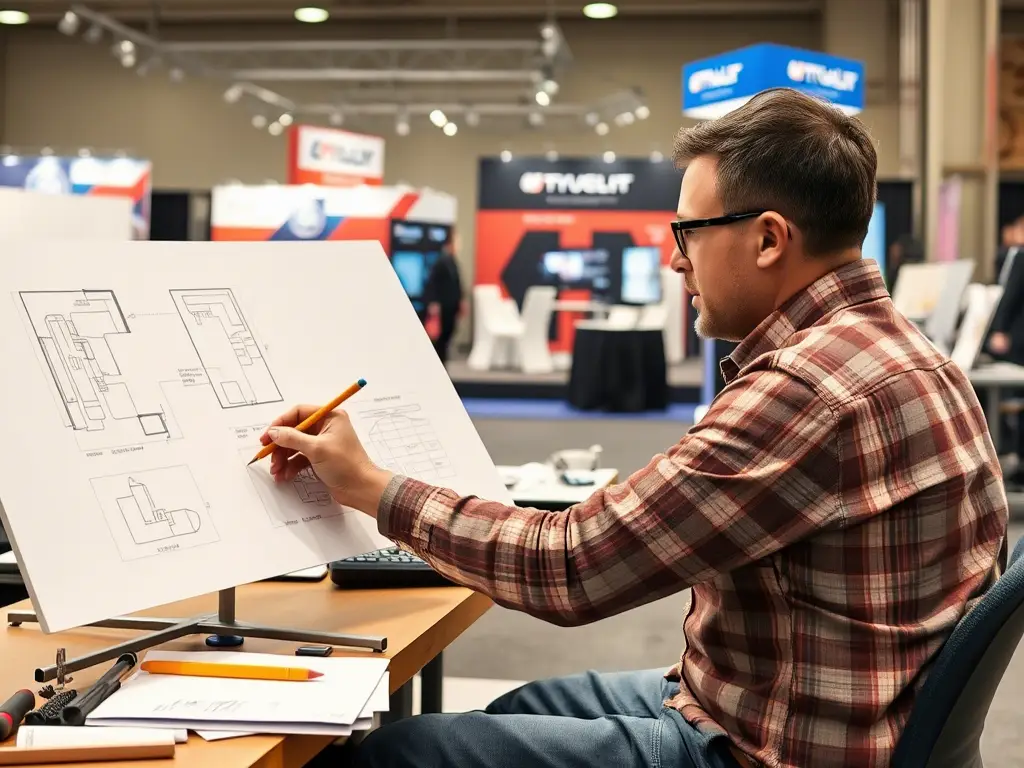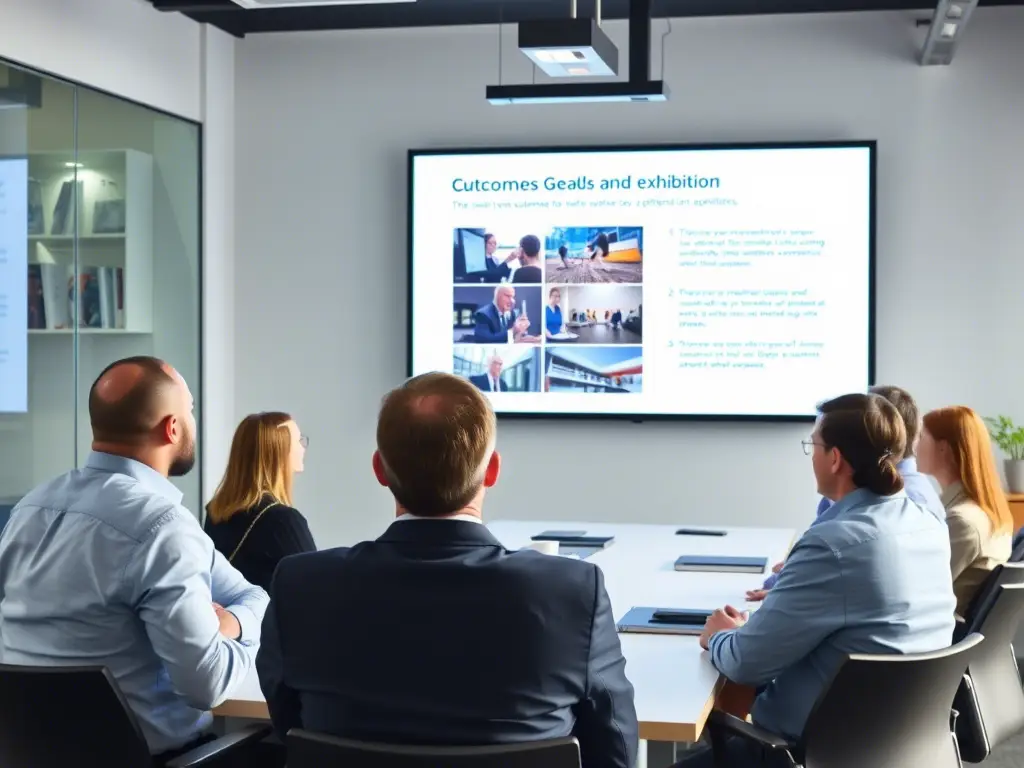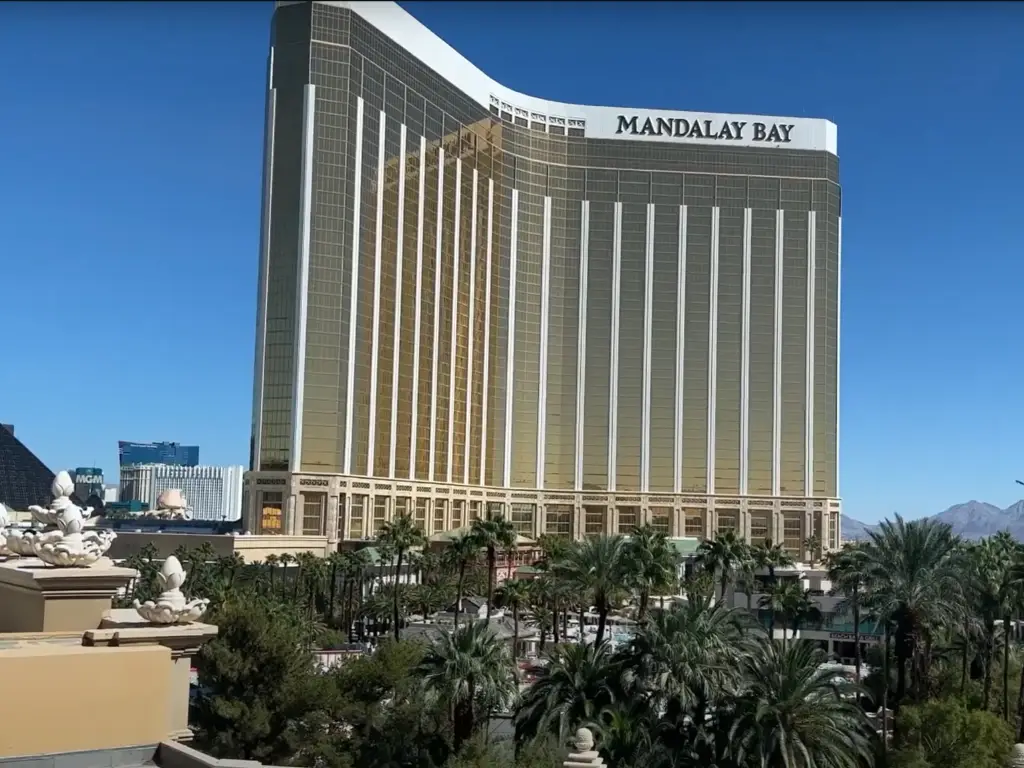Trade shows continue to be valuable avenues for both personal and business growth. It is important to note that success is not only determined by attendance to the event, but by how well one has prepared themselves with effective strategies for lead generation. This Guide focuses on direct strategies and their related actions that guarantee success at a trade show while avoiding common missteps usually associated with these events. By using the outlined strategies, the trade event is guaranteed not to be a financial burden but an investment that increases profits.
Strategic Pre-Show Planning for Lead Capture
It is accurate to say that successful trade shows start well in advance. Scheduling date marked “Show Day” on the calendar will not help and should be avoided at all costs. Things do not change as each show brings about its own event goals and expectations to achieve. Some of the leads might come via the top funnel strategy which invites attendees to engage fully. At the end of the day, before any trade show marketing activity there is need to establish who your ideal customers are.
- Defining Your Target Audience: This is qperhaps the most vital step of all, and one builds up to it, one has set a good pace for the rest of the things that follow. Prior to designing marketing efforts, activities, initiatives, other include attractions during the show at least one external factor must be put into consideration. How sharply an attendee can be cut from the trade event without feeling any loss is very essential. Moreover, What are the ask points and factors which seem to make up the crowd?
Suggestions: Develop buyer personas for your ideal leads. These detailed profiles should include their job titles, company size, industry challenges, and even their preferred communication channels. Use this information to tailor your messaging, visuals, and even the types of questions your team will ask on the show floor.
- Setting Quantifiable Goals: “Setting goals is always admirable, but without measurable targets, it becomes a wish.” Lead generation endeavors should be specific, measurable, achievable, realistic, and timely (also known as SMART). While dealing with lead generation, do not only focus on the number; also assess the quality. Note how many qualified leads, how many sales appointments booked, or how many post-show demonstrations scheduled.
Suggestions: Instead of “get more leads,” aim for “secure 150 qualified leads, 20 discovery calls, and 5 demo appointments.” Assign a monetary value to each type of lead based on your sales funnel conversion rates. This allows you to project your potential ROI and track performance accurately.
- Selecting the Right Trade Show: Different trade shows have different dealings. Even the best polished banner at the wrong trade show is a sunk cost. Investigate the past history of participants and exhibitors. Are the attendees matching your target audience? Does the focus of the trade show relate to your product or service?
Suggestions: Request a post-show report from previous years to understand attendance figures, key industries represented, and the types of attendees. Look for testimonials from past exhibitors. Consider attending a relevant show as a visitor first to gauge the atmosphere and audience firsthand.
Crafting an Irresistible Booth Experience
Dubbing your trade show as a booth is an understatement. It serves as a reflection of your company while advertising your business. For a manufacturer of exhibition stands and construction, making engaging booth experience is about smart design that expresses your value and provides proper interaction.
The goal is not only to have an eye catching appearance, it also should create an atmosphere that captivates, informs and engrosses potential customers. Consider your stand as a compass. It should be geared to draw in your preferred clientele through its design, arrangement, and functionality.
Inviting and friendly messages prompts them to walk through your booth while clear messaging instantly communicates what your offering is. Interactive features both capture sightseeing and active participation, whether through product demonstrations, touch screens, or entertaining activities. This helps enhance the insight and connection the passerby has with the brand.
Your booth is a combination of eye-catching appeal and efficient lead generation tools. It’s sophisticated and functional, which Aplus Expo instills in every project has helped transform trade show booth design and construction (visit aplusexpo.com to see our portfolio) by ensuring that every space is comfortable for engagement and conversation while simultaneously seamlessly tailored to lead capture objectives.
The motto we live by at Aplus Expo is “One Mind, Same Goal.” We function as an extension of your team with a focus on optimizing the display and advertisement of your brand and products to ensure that your ROI is maximized. We ensure effective two-way communication as we seek to understand all your specifications to bring all your ideas to life.
These comprise our specialized Marketing, Design, Transport, and Print, Install, Dismantle Teams. We build, design, print and ultimately deliver your ideal trade show booth. All your souhaits will be taken care of in a professional and dedicated manner.

Engaging Interactions: Maximizing On-Site Leads
The magic happens as soon as your striking booth is set up and people start interacting with your brand. Your on-ground team plays a critical role to ensure that interest gets converted into qualified leads. Knowledge of the products alone is not enough, listening and asking questions is equally important along with an attitude of excitement makes a whole lot of difference.
- Active Listening and Communication: It’s not about what you say, it’s rather about what you hear. The majority of exhibitors blunder the moment they start forming a pitch with no understanding the visitor’s needs. That’s simply ineffective. Instead, shed light on the investigation approach. You can also leverage social media by having dedicated team members monitor and respond to mentions or questions about your brand or products in real time, directly on social media platforms.
Suggestions: Prepare your staff to ask open-ended questions likely to stir discussions – “What challenges are you currently facing in [relevant industry area]?”. Also, train them to refrain from any questions that invite a wired “yes” or “no” response. Carefully listen to their answers, discover precise pain points you can address with your solution, and frame your response as the ideal answer to their concerns.
- Team Training & Booth Etiquette: Representatives are the public face of the company its representatives are drawn from. So, their business acumen and total booth engagement with the audience are critical. A well-briefed team will ensure coherent communication and optimal lead capturing.
Suggestions:
- Product Knowledge: It is necessary for every single person to understand the range of products and product lines, and equally necessary to know how to uniquely translate features into benefits of a new product customized for the audience.
- Lead Qualification: Develop and document a set of criteria to determine a qualified lead for your team before the show starts. Encourage your team to look for these criteria like the presence of a budget, authority, needs, timelines – BANT. You might also offer incentives for qualified leads to engage further.
- Role Playing: Multiple drills for common scenarios such as welcoming hot-spot questions and mock scenarios for politely stepping off from non-target visitors. Consider incorporating interactive games or activities that provide exclusive access or insights, making the interaction more memorable.
- Break Schedule: Allocate enough breaks to keep energy levels high while postponing the chance of burn-out. An exhausted team is an unproductive team.
- Avoid Distractions: Reinforce no phones, no eating within the booth, and no excessive huddles outside the booth. Staying focused on potential customers needs to be your number goal.
- Strategic Questioning for Lead Qualification: Each conversation is aimed at establishing whether the person interacting with the business is a potential lead and how strong (qualified) of a lead they are in case they are.
Suggestions: Use a pyramid approach to questioning. Start from the top; ask about their interests, then move deeper to those that require higher supporting decision-making. For instance:
- “Why do you hope to achieve by attending this show?” (General Interest)
- “Which specific challenges are you dealing with in [your product’s area]?” (Pain Points)
- “How are you dealing with those challenges?” (Current Solutions)
- “What is the timeframe of new solution implementation?” (Urgency)
- “Who is the general decision maker concerning these solutions in the company?” (Authority) This sequential way of questioning aids you in determining the level of time you should spend in a conversation.
Leveraging Tech for Seamless Lead Capture
Handwritten notes alone make sense in the digital world as much as paper maps make sense in the age of GPS. Technology can enhance the process of capturing leads to create repetition, assurance, efficiency, and instant follow-up. By integrating powerful tool technological solutions, your lead generation is savaged from a frantic scrabble to a seamless and harmonious process.
- Lead Capture Apps: These mobile apps, often compatible with smartphones or tablets, replace physical forms and business card scanners. They allow your team to input lead contact information directly, add qualifying notes, and even categorize leads on the spot, ensuring that you can offer exclusive content as an incentive. This ensures effective lead capture and efficient data collection.
- CRM Integration: The seamless integration of lead capture technology with your Customer Relationship Management (CRM) system is one of the most important features of capture technology. There is no need to perform data entry after the show as leads are ready to be followed up immediately, streamlining the lead generation process.
- QR Codes & Digital Content: Poster case studies, brochures, and even demo signup pages on your booth so that visitors can scan the QR codes directly for badge scanning and gain access. This lowers the physical collateral and gives accurate collection statistics.
Suggestions: The technology should be integrated and tested thoroughly before the tech show. Make sure that your workers are trained to use the devices. Have a backup plan ready, such as paper forms, in case there are technical mishaps.

Best Practices and Technology for Lead Capture:
| Technology/Tool | Description | Key Benefits | Practical Tips |
| Dedicated Lead Capture App | Mobile applications designed for event lead collection (e.g., AtEvent, Lead Liaison, specific show apps). | Real-time data entry, custom qualification questions, notes, photo capture. | Choose an app that integrates with your CRM. Train all staff on its features before the show. |
| CRM Integration | Direct connection between lead capture tools and your CRM system (e.g., Salesforce, HubSpot, Zoho CRM). | Eliminates manual data entry, ensures immediate availability for follow-up, reduces errors. | Test the integration thoroughly. Map lead fields correctly to your CRM. |
| QR Codes for Content | Scannable codes linking to digital brochures, whitepapers, demo sign-ups, or contact forms. | Eco-friendly, provides valuable analytics on content engagement and attendee preferences, reduces physical collateral. | Make QR codes prominent. Ensure links go directly to mobile-optimized content. Use tracking URLs. |
| Digital Surveys/Forms | Short, engaging surveys or forms on tablets at the booth to gather specific visitor interests or feedback. | Gathers deeper insights, qualifies leads, can trigger automated follow-ups. | Keep forms concise. Offer an incentive for completion (e.g., entry into a prize draw). |
Post-Show Nurturing: From Leads to Loyal Customers
The true value derived from your trade show investment doesn’t take shape on the show floor but rather entails the subsequent days and weeks post the event. Ignoring your follow-up strategy if not the biggest mistake a company can commit is like planting a seed and never watering it; which goes without saying far more damaging. This phase entails working towards transforming a mere contact list into a robust pipeline filled with qualified prospects seeking your offering and loyal patrons. It’s about moving potential clients through your conversion funnel effectively.
- First and foremost, the optimal window for follow-up is within 24-48 hours. Beyond that, your booth along with the conversation had will commence to fade away from the attendees memory. When dealing with emails, make sure it is not generic. You would want customized specifically directed to an individual rather than bulk emails.
Suggestions:
- Restructure the temperature of your leads: Assign based upon your qualification criteria: Hot (fully receptive to sales), Warm (somewhat inclined, needs persuasion), and Cold (marks long-term cycle or not qualified). This helps identify your quality leads and valuable leads.
- Customized Communication: Mention particular conversations, topics of common interests, or inquiries made at the booth as these indicate you were paying attention and respecting their time. “It was a pleasure discussing X with you at our booth. As you noted, Y could be a promising solution to Z challenge you’re grappling with.”
- Offer Value Instead: Refrain from pitching sales. Directly offer relevant content such as a whitepaper, case study, demo video, or even address their needs with a blog post.
- Lead Engagement Campaigns: For “warm” leads, a higher quality nurturing sequence aids in advancing them through the sales funnel. This is not just one email; it is a sequence designed to sequentially teach, build trust, and expose and alleviate objections over time.
Suggestions:
- Multi Hybrid Approach: Emails can be merged with LinkedIn connections, follow-up phone calls (for warm leads), or even sent via postal mail for a more personalized approach.
- Content Placement: Position the content according to the lead’s stage in the buyer’s journey. Early-phase leads require more educational materials, while more advanced leads might need product comparisons or testimonials.
- Automated Workflows: Employ marketing automation tools to initiate email sequences based on lead score or particular interactions such as resource downloads.
Post-Show Lead Nurturing Best Practices:
| Method | Description | Best Practices |
| Personalized Emails | Individually crafted emails referencing specific booth conversations, shared interests, or problems discussed. Sent within 24-48 hours. | Crucial: Always personalize. Include a clear call to action (e.g., schedule a demo, download a resource). Segment leads by their qualification level (hot, warm, cold). |
| LinkedIn Connection | Sending a personalized connection request after the show. | Reference the show and your conversation. Don’t just send a generic request. |
| Value-Added Content | Sending relevant resources (whitepapers, case studies, webinars, blog posts, demo videos) that address the lead’s expressed needs or pain points. | Content should be genuinely helpful, not just a sales pitch. Map content to different stages of the buyer’s journey. |
| Targeted Phone Calls | For highly qualified “hot” leads, a direct phone call can be highly effective. | Have a clear objective for the call (e.g., schedule a follow-up meeting). Reference the show interaction. Be prepared for a brief, value-driven conversation, not a cold call. |
| Automated Nurturing Sequences | Using marketing automation platforms to create a series of pre-scheduled, personalized emails triggered by lead actions or qualification criteria. | Design sequences with varied content and calls to action over time. Monitor engagement (open rates, click-throughs). Allow leads to opt out easily. |
| Retargeting Ads | Displaying targeted ads to website visitors who interacted with your booth’s digital content or visited your website after the show. | Reinforce your brand message. Offer specific solutions based on their shown interest. Use compelling visuals and strong calls to action. |
| Event Replay/Recap | Sending a general recap email with highlights from the show, links to popular content, or a thank you message to all attendees who visited your booth (even less qualified ones). | Keep it concise and visually appealing. Can be a softer touchpoint for leads who aren’t ready for a direct sales approach but might be interested in future engagement. |
Measuring ROI: Optimizing Future Trade Shows
Trade shows are an exhibit hall filled with booths and resources that are ready to be used without any ROI tracking; this strategy can be likened to gambling. Knowing whether your trade show marketing efforts worked or not is necessary to derive value from the dollars spent in the future. This analysis helps outline a refined approach that strategically guides spending, shifting from viewing expenses as a sinkhole to repurposing them as savings for your next trade show. There is no conjecture here. Evaluating the ROI needs number crunching alongside other tools that provide valuable insight into the team’s true value to the company.
- Set Up Evaluation Criteria: Make sure you set your benchmarks leading up to the event to track your success. Measuring success as hitting a number of leads will be far too simplistic and a bad target. What is the average deal size that you would get from a qualified lead? What does your sales cycle look like? These figures form an essential part of assessing resultant treated.
Suggestions:
- Cost Per Lead. Attach a cost to a qualified lead by dividing total exhibit costs (including booth, travel, staffing, and marketing) by the number of leads generated.
- Cost Per Opportunity. Attach a value to the total leads by dividing total exhibit costs by sales opportunities created from the show.
- Revenue Attribution. Measuring return on investment is best done this way, track the revenue that can be fairly claimed to have been generated from leads that were picked up at the show over a time period of 6 months to 12 months. This ROI metric should be your top priority.
- Conversion Tracking. Tracking the percentage of raw leads that turn into qualified leads, qualified leads into opportunities, and opportunities into closed-won deals provide useful insight, especially when monitored in real time.
- Post-Show Analysis and Feedback: Supplement your sales and marketing analyses from within the teams. What were the takeaways? What went great? What needs improvement? These insights add to your qualitative data metrics.
Suggestions: Hold a post-mortem meeting with all involved teams and discuss:
- The effectiveness of the booth’s design and location.
- The quality of the leads gathered (e.g., “Would you consider them to be really qualified?”)
- The team’s performance and further training needs.
- The effectiveness of the lead capture and follow-up procedures.
- Problems that arose and how those problems were addressed.

Common Pitfalls & Best Practices to Avoid
Trade shows – even with careful planning and execution – will often give in to common pitfalls. Identifying these issues ahead of time allows prompt corrective actions that not only mitigate these hurdles but transform them into opportunities for refined focus.
- Defined Goals Absence of Clear Objectives:
- Pitfall: Attending a show without defined goals for lead quantity, quality, or desired outcomes. This leads to aimless lead generation efforts and difficulty in measuring success.
- Best Practice: As with every show, remember to set SMART (specific, measurable, achievable, relevancy, time-bound) goals. Example: Within three months, fill the sales team pipeline with 100 qualified sales opportunities that convert at no less than 20%.
- Under-Trained Staff:
- Pitfall: Releasing staff to the booth for interactions without equipping with lead qualification training, communication skills, or product training. Their primary goal would be to gather as many business cards as possible, hindering effective lead generation strategies.
- Best Practice: Schedule pre-show training sessions with all staff as mandatory. Illustrate active listening and asking qualifying questions, explaining lead capture technology, ideal customer profiles, and stress that it is about the quality not the quantity.
- Passive Booth Behavior:
- Pitfall: employees sitting down and engaging internally with people in their cluster. Looking at phones, eating, and having non work related internal conversations signals “do not disturb” to passersby, negatively impacting the attendee experience.
- Best Practice: Staff should be standing and inviting wither passersby with active engagement. Foster an energetic, inviting atmosphere. Think of your staff as ambassadors who are actively marketing your products, instead of static devices on display.
- Generic Follow-Up:
- Pitfall: Generic bulk email to all leads irrespective of their interaction and qualification level. Generic emails tend to perform poorly with open and unsubscribe rates.
- Best practice: Segment leads by their level of qualification (hot, warm, cold) and tailor follow-up messages. Cite universal conversations important to them and append value helpful to them. Activeness is paramount—followup within one to two days.
- Ignoring Post Show Analysis:
- Pitfall: Treating the trade show as if it is the only event without analyzing data, gathering feedback, or calculating ROI. In other words, you’re trying to achieve something but in practical sense, it won’t yield any returns.
- Best practice: Set up a post-show debriefing. Examine lead quality, conversion rates, and costs. Update your marketing strategies with these insights for your future shows as there is always scope for improvement.
- Over-Reliance on Giveaways:
- Pitfall: Paying attention solely to luring visitors with low-priced giveaways rather than engaging them with your work. This brings in “swag hunters” not true prospects.
- Best Practice: Approach giveaway items with careful analysis. Go for items of higher value that are related to the business and require a form of interaction to be obtained. Or use a prize draw where participation can encourage more engagement and lead capture (e.g. “Drop your business card to win x!”). Remember, your product/service itself should be the powerful tool for attracting leads.
As with anything worthwhile, success comes as a result of ongoing work and smart optimization steps, and this is also true for mastering trade show lead generation.
This level of trade show presence can lift ordinary business to the next level bolstered by the guarantee that every interaction can lead to successful partnerships.






